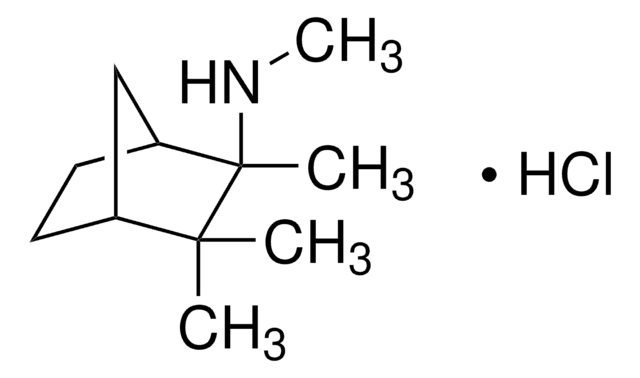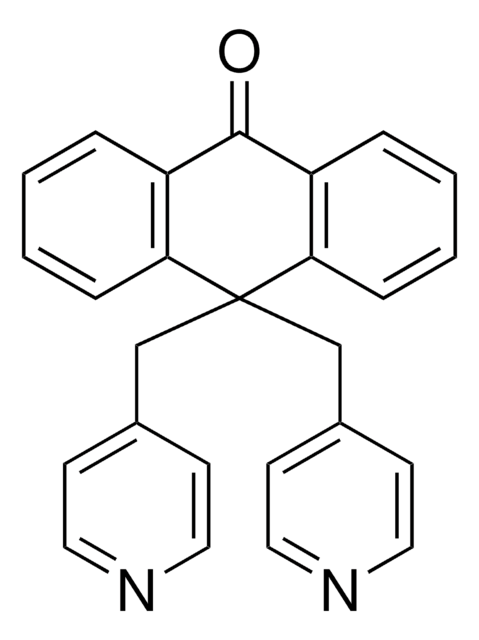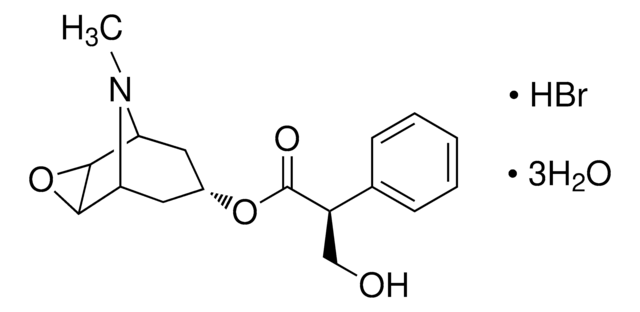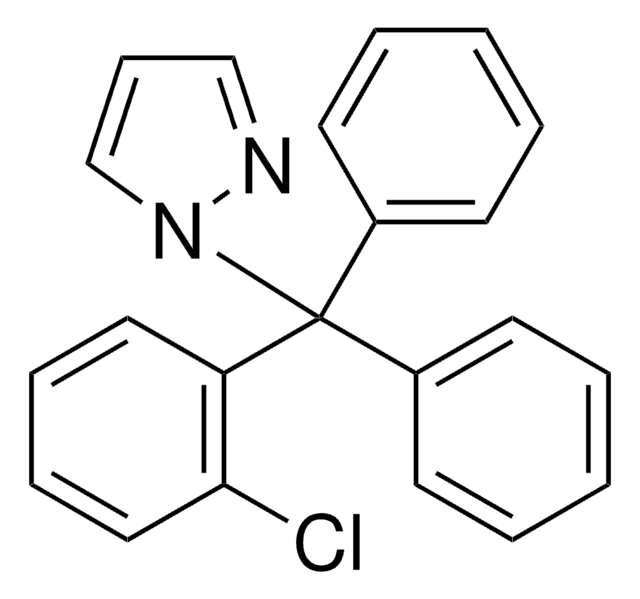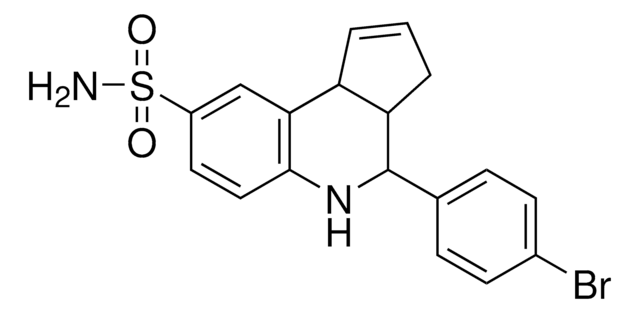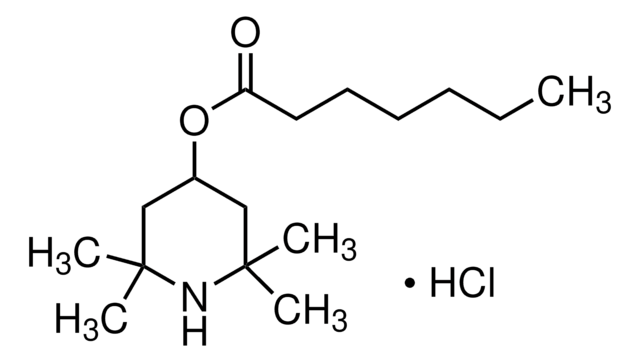L134
Linopirdine
≥98% (HPLC)
Sinonimo/i:
1,3-Dihydro-1-phenyl-3,3-bis(4-pyridinylmethyl)-2H-indol-2-one, DuP 996
About This Item
Prodotti consigliati
Saggio
≥98% (HPLC)
Colore
white to off-white
Solubilità
DMSO: >10 mg/mL
ethanol: 240 mg/mL
Stringa SMILE
O=C1N(c2ccccc2)c3ccccc3C1(Cc4ccncc4)Cc5ccncc5
InChI
1S/C26H21N3O/c30-25-26(18-20-10-14-27-15-11-20,19-21-12-16-28-17-13-21)23-8-4-5-9-24(23)29(25)22-6-2-1-3-7-22/h1-17H,18-19H2
YEJCDKJIEMIWRQ-UHFFFAOYSA-N
Informazioni sul gene
rat ... Kcnj1(24521)
Descrizione generale
Azioni biochim/fisiol
Note legali
Codice della classe di stoccaggio
11 - Combustible Solids
Classe di pericolosità dell'acqua (WGK)
WGK 3
Punto d’infiammabilità (°F)
Not applicable
Punto d’infiammabilità (°C)
Not applicable
Dispositivi di protezione individuale
Eyeshields, Gloves, type N95 (US)
Scegli una delle versioni più recenti:
Possiedi già questo prodotto?
I documenti relativi ai prodotti acquistati recentemente sono disponibili nell’Archivio dei documenti.
Il team dei nostri ricercatori vanta grande esperienza in tutte le aree della ricerca quali Life Science, scienza dei materiali, sintesi chimica, cromatografia, discipline analitiche, ecc..
Contatta l'Assistenza Tecnica.